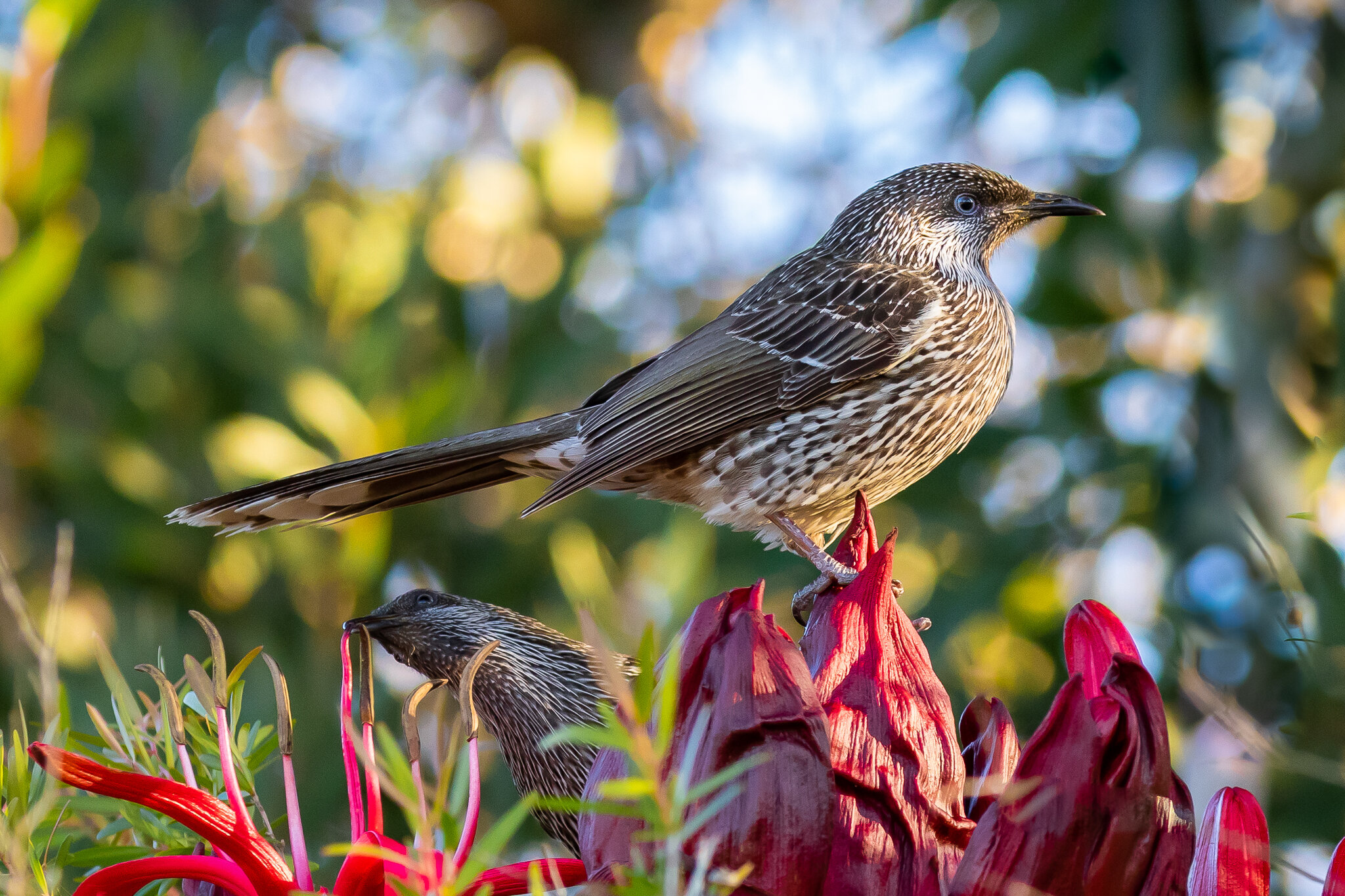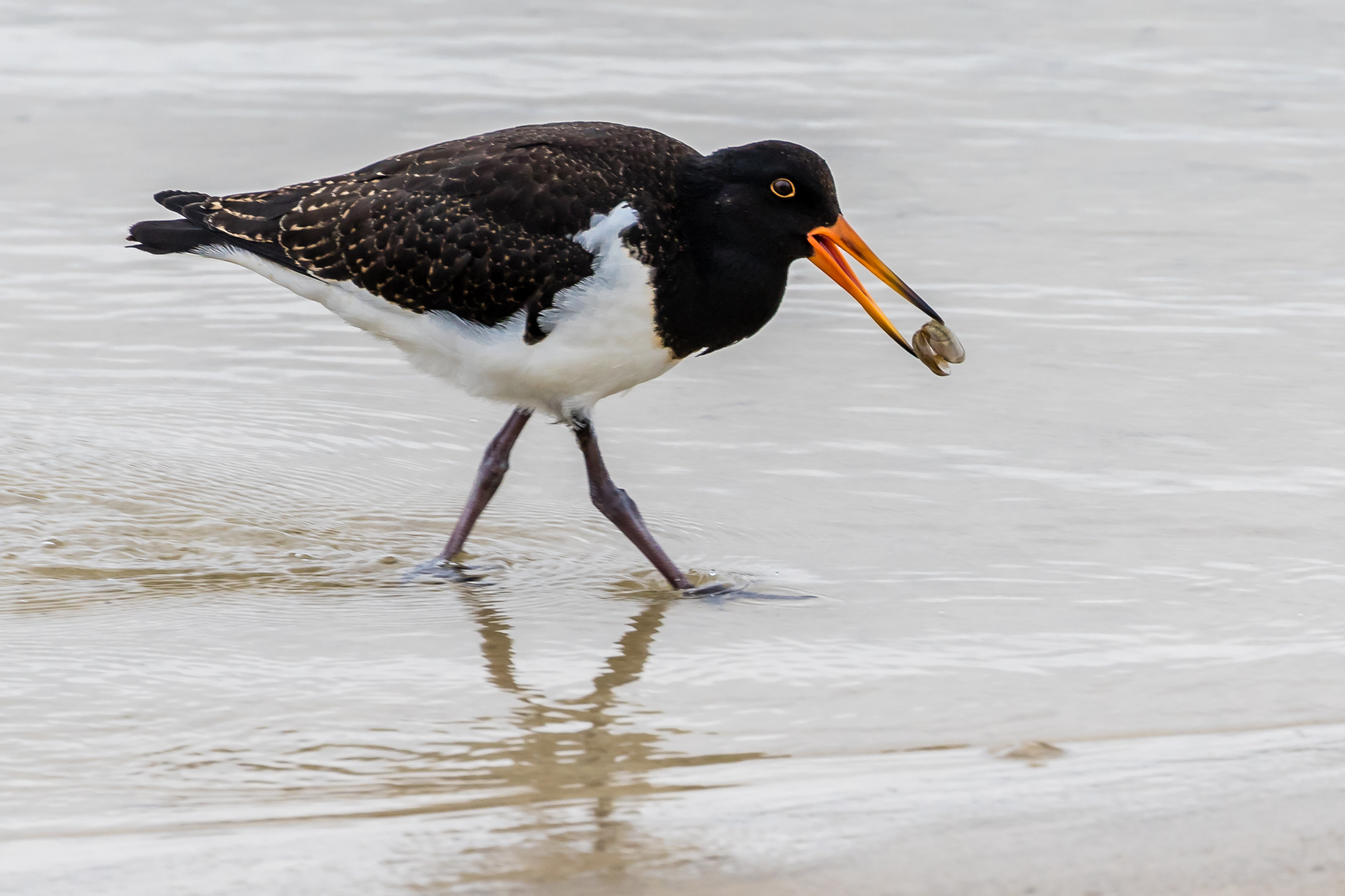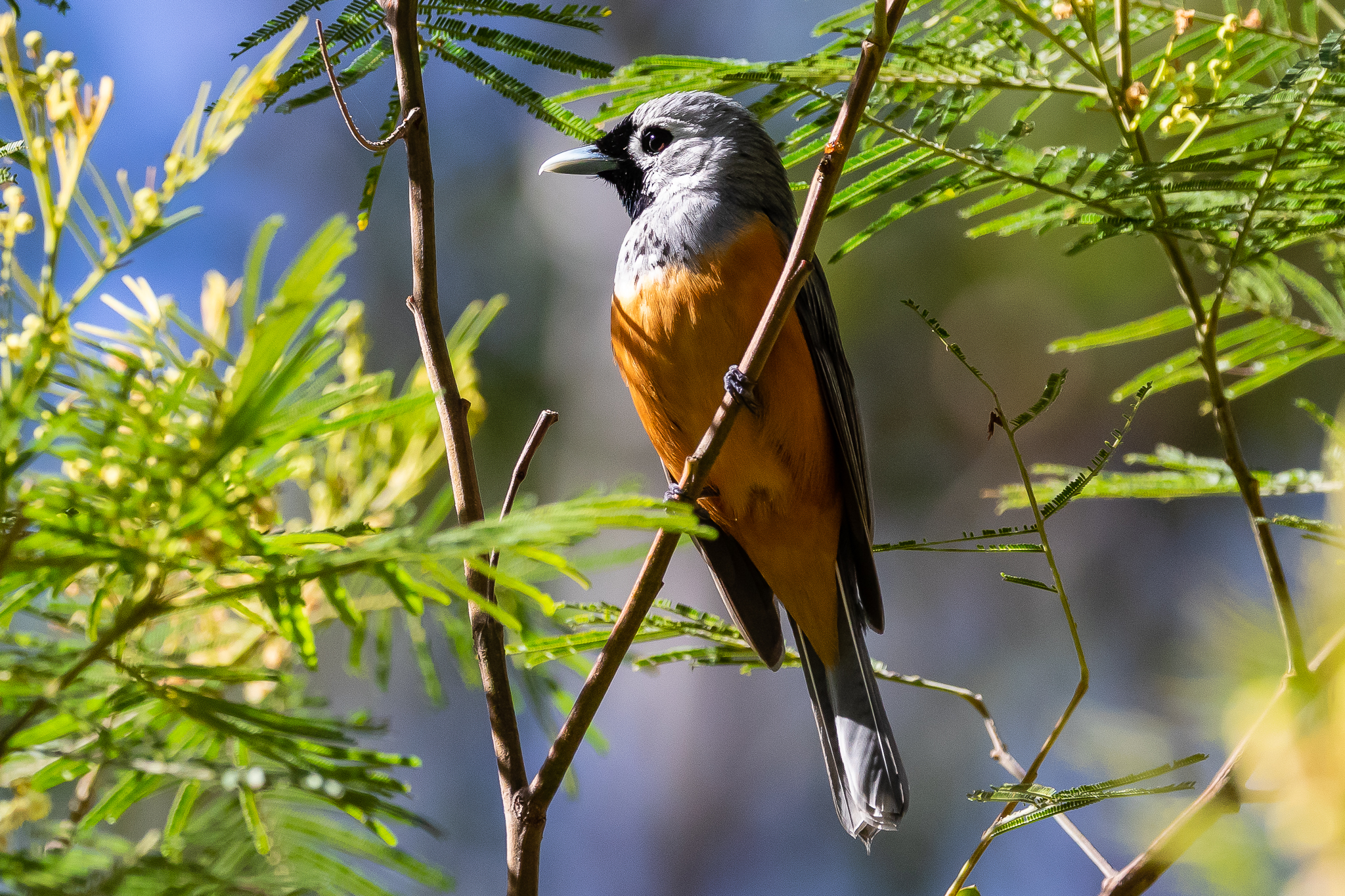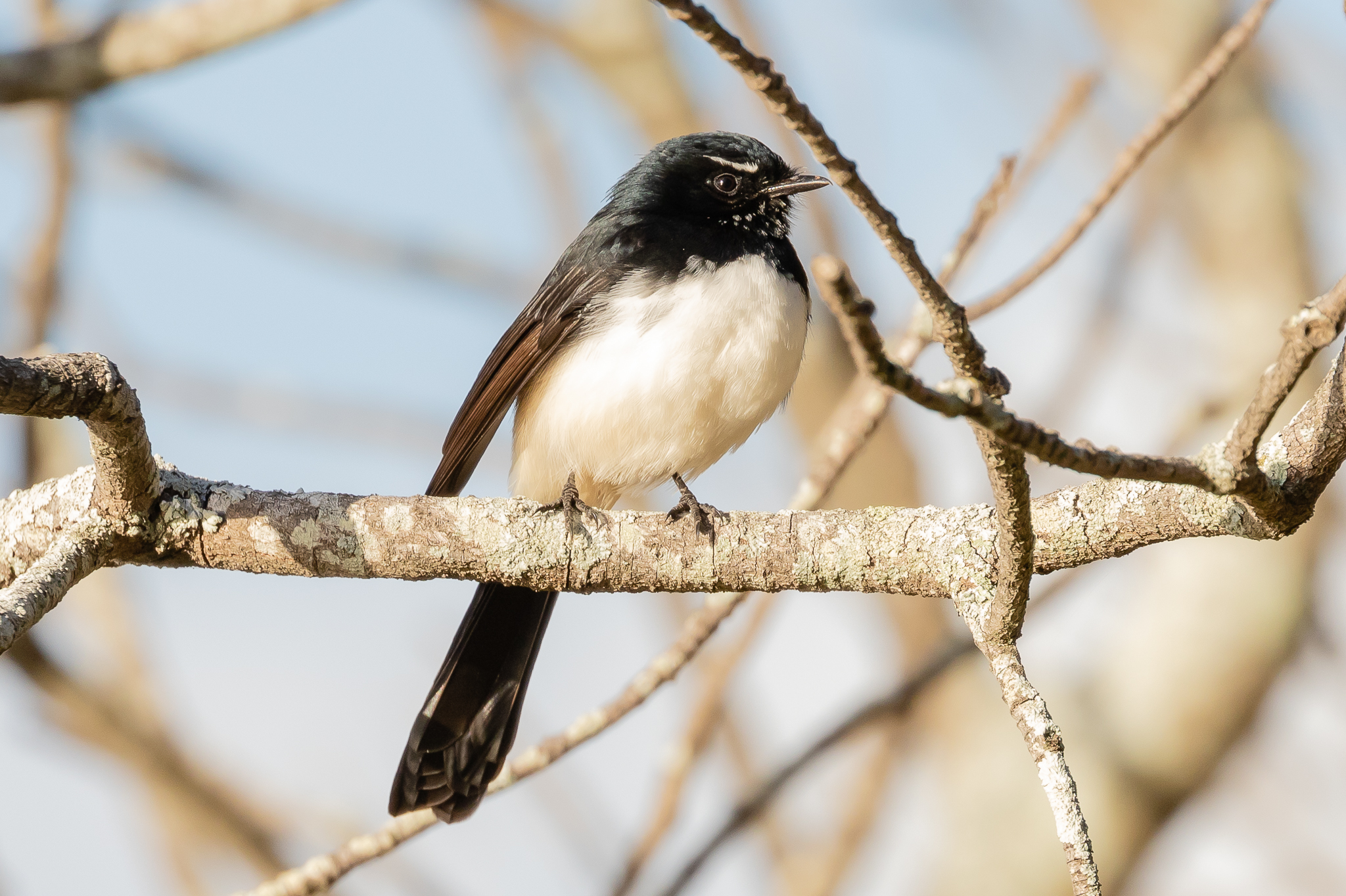South Coast NSW
The South Coast river mouths and lagoons are havens for seabirds and waterbirds. Packs of honeyeaters migrate south in spring as the coastal eucalypts, banksias and acacias bloom. The Morton, Booderee and Murramarang National Parks provide heathland, bush and rainforest habitats. Shoalhaven Heads, Bomaderry Creek, Lake Wollumboola and Narrawallee Inlet are among many excellent bird viewing sites.
Link to “Shoalhaven Bird Walks” for bird-watching sites.
Photo: Male Australian King Parrots have an entirely red head while the head of the female, seen here, is green.
Galahs feed on seeds, usually on the ground, but here are supplementing their diet with blossom and nectar. South Coast parrots also include Rainbow Lorikeets, Crimson Rosellas, Gang Gang, Yellow-tailed Black Cockatoos, and Glossy Black Cockatoos.
Little Wattlebirds feeding on nectar in a huge Gymea Lily flowerhead. The Little Wattlebird supplements its high sugar diet with insects and berrys. A common bird on the New South Wales south coast.
Crested Terns and Silver Gulls at Lake Conjola Entrance. They take off when danger threatens, perhaps a raptor is flying above? Pelicans; Little Terns; Pied and Sooty Oystercatchers; Red-capped, Double-banded and Hooded Plovers are seen on South Coast beaches.
The Pied Oystercatcher is a threatened species on NSW's south coast, its breeding grounds reduced due to development.
A group of young Red-capped Plovers brace against the sand and surf. Red-capped Plovers nest and feed on the beach, searching for molluscs and small crustaceans.
This Superb Fairy-wren is on the beach today. More usually it will be feeding in low bush and grass, looking for insects. The Superb Fairy-wren is a common companion through the South Coast area.
The Beautiful Firetail feeds on grass-seed and Melaleuca seed in the swampy grasslands in coastal forests.This Beautiful Firetail was seen in thick bush just behind the sand-hills on the coast.
The Black-faced Monarch is found in South Coast forests and woodlands, feeding on insects it finds in the foliage or taking insects on the wing. It spends the winter in New Guinea and summers along the east coast of Australia.
Spotted Pardalotes frequent the bush and the forests of Morton National Park. Some times, like this bird, Spotted Pardalotes are seen close to the beach. They feed on insects and manna.
The friendly Eastern Yellow Robin feeds on insects and spiders. It is found on Australia's east and south-east coast and is common in the NSW South Coast region.
The Masked Lapwing used to be called the Spur-Winged Plover because each of its wings is armed with a spur at the elbow.
Rainbow Lorikeets fly in large and noisy flocks up and down the coast looking for flowering plants and nectar.
Golden Whistlers feed on insects, spiders and some seeds and berries. This male Golden Whistler is feeding from leaves and bark from low tree branches.
The Female Golden Whistler wears a more subtle and refined colour scheme compared to the bright yellow, white and black garb of the male. This bird was photographed at Narrawallee Inlet.
This White-bellied Sea-Eagle has taken an Australian Raven on the wing and is now taking it home while fending off the Raven’s companion. Photographed at Shoalhaven Heads.
Jacky Winters prefer the open spaces of farmlands and parks. They are agile flyers and insect catchers. This bird was seen at the foot of the escarpment on the road to Porter Gap near Lake Conjola.
The small Brown Gerygone (11cm) is a common visitor in South Coast forests. Often seen fluttering through dense foliage eating insects on the wing.
The Grey Fantail is a curious bird, often approaching closely in its fluttering flight as it looks for insects amongst the foliage.
The New Holland Honeyeater is one of the most common Honeyeaters, here seen feeding on nectar from flowering coastal shrub.
The Sooty Oystercatcher prefers a rocky shoreline and is almost always found close to the sea. They eat molluscs and other small marine creatures, the long bill used to stab its prey or lever shells open.
The Chestnut Teal Duck has a high tolerance for salt water and is seen in estuaries and tidal lagoons as well as inland ponds. They feed along the waters edge, dabbling - bottoms up, head in the water! - at seeds and insects, vegetation and molluscs on the bottom.
Willie Wagtail feeds on insects in the air and on the ground. Its name comes from the characteristic “wag to the side” of its tail.
Yellow-tailed Black Cockatoos are often seen in small flocks. They announce their arrival with their wailing call. They feed on native tree seeds and pine cones.
The Red Wattlebird is another common honeyeater along the South Coast. This younger bird is still to develop it's characteristic red throat wattles.
This White-faced Heron is searching for small fish and crustaceans left as the tide recedes.

























